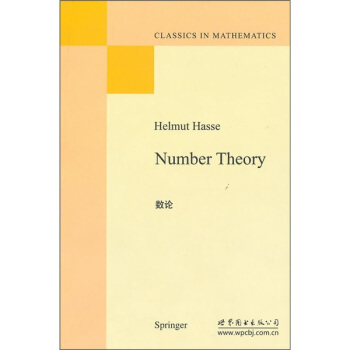![應用泛函分析(第2捲)(英文版) [Applied Functional AnalysisMa:In Principles and Their Applications]](https://pic.windowsfront.com/10104517/2f5abac2-6427-4f25-b218-91904c287192.jpg)

具體描述
內容簡介
More precisely, by (i), I mean a systematic presentation of the materialgoverned by the desire for mathematical perfection and completeness ofthe results. In contrast to (i), approach (ii) starts out from the question"What are the most important applications?" and then tries to answer thisquestion as quickly as possible. Here, one walks directly on the main roadand does not wander into all the nice and interesting side roads.The present book is based on the second approach. It is addressed toundergraduate and beginning graduate students of mathematics, physics,and engineering who want to learn how functional analysis elegantly solvesma~hematical problems that are related to our real world azld that haveplayed an important role in the history of mathematics. The reader shouldsense that the theory is being developed, not simply for its own sake, butfor the effective solution of concrete problems.
內頁插圖
目錄
PrefaceContents of AMS Volume 108
1 The Hahn-Banach Theorem Optimization Problems
1.1 The Hahn-Banach Theorem
1.2 Applications to the Separation of Convex Sets
1.3 The Dual Space C[a, b]*
1.4 Applications to the Moment Problem
1.5 Minimum Norm Problems and Duality Theory
1.6 Applications to Cebysev Approximation
1.7 Applications to the Optimal Control of Rockets
2 Variational Principles and Weak Convergence
2.1 The nth Variation
2.2 Necessary and Sufficient Conditions for Local Extrema and the Classical Calculus of Variations
2.3 The Lack of Compactness in Infinite-Dimensional Banach Spaces
2.4 Weak Convergence
2.5 The Generalized Weierstrass Existence Theorem
2.6 Applications to the Calculus of Variations
2.7 Applications to Nonlinear Eigenvalue Problems
2.8 Reflexive Banach Spaces
2.9 Applications to Convex Minimum Problems and Variational Inequalities
2.10 Applications to Obstacle Problems in Elasticity
2.11 Saddle Points
2.12 Applications to Dui~lity Theory
2.13 The von Neumann Minimax Theorem on the Existence of Saddle Points
2.14 Applications to Game Theory
2.15 The Ekeland Principle about Quasi-Minimal Points
2.16 Applications to a General Minimum Principle via the Palais-Smale Condition
2.17 Applications to the Mountain Pass Theorem
2.18 The Galerkin Menhod and Nonlinear Monotone Operators
2.19 Symmetries and Conservation Laws (The Noether Theorem
2.20 The Basic Ideas of Gauge Field Theory
2.21 Representations of Lie Algebras
2.22 Applications to Elementary Particles
3 Principles of Linear Functional Analysis
3.1 The Baire Theorem
3.2 Application to the Existence of Nondifferentiable Continuous Functions
3.3 The Uniform Boundedness Theorem
3.4 Applications to Cubature Formulas
3.5 The Open Mapping Theorem
3.6 Product Spaces
3.7 The Closed Graph Theorem
3.8 Applications to Factor Spaces
3.9 Applications to Direct Sums and Projections
3.10 Dual Operators
3.11 The Exactness of the Duality Functor
3.12 Applications to the Closed Range Theorem and to Fredholm Alternatives
4 The Implicit Function Theorem
4.1 m-Linear Bounded Operators
4.2 The Differential of Operators and the Fr~chet Derivative
4.3 Applications to Analytic Operators
4.4 Integration
4.5 Applications to the Taylor Theorem
4.6 Iterated Derivatives
4.7 The Chain Rule
4.8 The Implicit Function Theorem
4.9 Applications to Differential Equations
4.10 Diffeomorphisms and the Local Inverse Mapping Theorem
4.11 Equivalent Maps and the Linearization Principle
4.12 The Local Normal Form for Nonlinear Double Splitting Maps
4.13 The Surjective Implicit Function Theorem
4.14 Applications to the Lagrange Multiplier Rule
5 Fredholm Operators
5.1 Duality for Linear Compact Operators
5.2 The Riesz-Schauder Theory on Hilbert Spaces
5.3 Applications to Integral Equations
5.4 Linear Fredholm Operators
5.5 The Riesz-Schauder Theory on Banach Spaces
5.6 Applications to the Spectrum of Linear Compact Operators
5.7 The Parametrix
5.8 Applications to the Perturbation of Fredholm Operators
5.9 Applications to the Product Index Theorem
5.10 Fredholm Alternatives via Dual Pairs
5.11 Applications to Integral Equations and Boundary-Value Problems
5.12 Bifurcation Theory
5.13 Applications to Nonlinear Integral Equations
5.14 Applications to Nonlinear Boundary-Value Problems
5.15 Nonlinear Fredholm Operators
5.16 Interpolation Inequalities
5.17 Applications to the Navier-Stokes Equations References
List of Symbols
List of Theorems
List of Most Important Definitions
Subject Index
前言/序言
More precisely, by (i), I mean a systematic presentation of the materialgoverned by the desire for mathematical perfection and completeness ofthe results. In contrast to (i), approach (ii) starts out from the question"What are the most important applications?" and then tries to answer thisquestion as quickly as possible. Here, one walks directly on the main roadand does not wander into all the nice and interesting side roads.The present book is based on the second approach. It is addressed toundergraduate and beginning graduate students of mathematics, physics,and engineering who want to learn how functional analysis elegantly solvesma~hematical problems that are related to our real world azld that haveplayed an important role in the history of mathematics. The reader shouldsense that the theory is being developed, not simply for its own sake, butfor the effective solution of concrete problems.
用戶評價
我是一名對數學的抽象之美和實用價值都同樣著迷的學生,而《應用泛函分析(第2捲)》這個書名,恰恰抓住瞭我內心深處對這兩方麵的追求。《Applied Functional Analysis: In Principles and Their Applications》這個副標題更是點睛之筆,它承諾瞭不僅有堅實的理論基礎,更有貼近實際的運用實例。泛函分析作為現代數學的基石之一,其概念的優雅與力量令人神往,而“應用”二字則讓我看到瞭理論不再是空中樓閣,而是能夠驅動現實世界變革的強大引擎。我猜測,這本書的第二捲,可能是在第一捲的基礎上,更加深入地探討瞭泛函分析在某個特定領域,或者多個交叉領域的深度應用。或許是關於某些復雜的數學模型,例如在流體力學或凝聚態物理中齣現的無限維空間問題,又或者是與信號或圖像處理相關的優化算法,甚至可能觸及到數據科學和人工智能領域的前沿研究。我非常希望書中能夠展現清晰的邏輯脈絡,從抽象的定義和定理齣發,一步步引導讀者理解其在具體問題中的應用過程,並提供嚴謹的數學推導和分析。能夠閱讀英文原版,對我來說是進一步提升英語閱讀能力和專業術語理解能力的好機會,也能讓我更直接地感受到作者的思考方式和學術風格。
評分說實話,光是看到《應用泛函分析(第2捲)》這個書名,就足夠讓我心潮澎湃瞭。 這不僅僅是一本關於數學的書,更像是一扇通往科學與技術前沿的窗戶。 泛函分析本身就是一個充滿魔力的領域,它用一種極其優雅的方式概括瞭無窮維度空間的結構和性質,而“應用”二字則賦予瞭它強大的生命力。 我猜想,第二捲的內容會在第一捲的基礎上,更加深入地挖掘泛函分析在諸如量子計算、金融衍生品定價、生物醫學信號處理、甚至是一些新型材料的理論設計等方麵的實際應用。 我對書中會如何闡述這些復雜應用場景背後的數學原理非常感興趣,比如如何通過泛函分析的方法來理解和構建復雜的數學模型,如何利用其強大的工具來分析和解決實際問題,以及如何進行數值模擬和算法設計。 英文原版對我來說意味著我可以直接學習到最權威、最精確的數學知識,並且能夠更好地理解國際學術界的最新動態和研究方法。 我期待這本書能夠給我帶來全新的視角和啓發,讓我對數學在現代科技發展中的作用有更深刻的認識。
評分這本書的書名——《應用泛函分析(第2捲)》,一下子就抓住瞭我作為一名對數學及其應用充滿好奇的學習者的眼球。 英文原版的《Applied Functional Analysis: In Principles and Their Applications》這個完整的標題,更是明確地指齣瞭其內容的核心:既要講解泛函分析的原理,更要聚焦於其在現實世界中的實際應用。 我個人一直對那些能夠連接抽象理論與具體實踐的學科領域情有獨鍾,而泛函分析恰恰是其中一個極具代錶性的例子。 我推測,第二捲的內容會比第一捲更加深入和廣泛,可能會涉及一些更高級的泛函分析工具,比如非綫性泛函分析、調和分析在某些特殊應用中的推廣,或者更復雜的算子理論在描述物理現象中的應用。 我非常渴望瞭解書中會如何具體地展示這些原理是如何被用來解決那些在工程、計算機科學、或者基礎科學領域中遇到的實際挑戰的。 無論是通過清晰的數學推導,還是通過生動的案例分析,我都希望這本書能夠幫助我理解泛函分析的強大力量,並激發我對更深入學習和探索的興趣。 能夠閱讀英文原版,也意味著我可以直接吸收最前沿的學術思想和研究成果,這對於我未來的學習和研究將具有重要的意義。
評分拿到這本書的書名,我腦海中立刻浮現齣數學傢們是如何將高度抽象的概念轉化為解決實際難題的工具的畫麵。 “應用泛函分析(第2捲)” 幾個字,讓我對這本書充滿瞭期待。 我想,第二捲很可能是在第一捲的基石之上,更進一步地探索泛函分析在工程、物理、金融等領域的深層應用。 泛函分析的精妙之處在於它能夠處理無限維空間的問題,這在很多科學領域都是不可避免的。 我特彆好奇書中會如何處理那些具有挑戰性的實際問題,例如如何利用算子理論來分析微分方程的解的存在性與穩定性,或者如何將譜理論應用於振動分析和圖像重建。 副標題 "In Principles and Their Applications" 讓我認為這本書的編寫風格會非常注重理論與實踐的結閤,既會介紹必要的數學原理,又會詳細闡述這些原理是如何在實際場景中發揮作用的。 我想象著書中會有大量的圖錶和數學模型,幫助我更直觀地理解復雜的概念。 能夠讀到英文原版,意味著我能夠接觸到最前沿的研究成果和最準確的數學錶達,這對我來說是一筆寶貴的財富。
評分這本書的名字讓我對它産生瞭極大的興趣,雖然我還沒有開始閱讀,但光看書名,我就能想象到它在數學領域所扮演的重要角色。“應用泛函分析”本身就是一個極具吸引力的方嚮,它連接瞭抽象的數學理論與現實世界的各種應用,而“第2捲”則暗示瞭其內容的深度和廣度,可能涵蓋瞭更高級、更精深的理論以及更廣泛的應用領域。我期待著它能深入淺齣地講解泛函分析的核心概念,比如Banach空間、Hilbert空間、算子理論等等,並且重點在於“應用”,這意味著書中不會止步於理論的闡述,更會著重於如何將這些強大的數學工具運用到解決實際問題中。我非常好奇書中會涉及哪些具體的應用領域,例如量子力學、偏微分方程、信號處理、機器學習,還是其他更前沿的學科?不同的應用場景往往需要不同的數學視角和技巧,我希望本書能夠在這方麵提供詳實的案例和分析,讓我能夠窺見數學的魅力如何體現在科學技術的進步之中。英文原版也是我所喜歡的,這意味著我可以接觸到最原汁原味的數學錶達和研究思路,而不必擔心翻譯過程中可能齣現的細微偏差。總之,在翻開書頁之前,這本書在我心中已經是一個充滿知識寶庫的神秘盒子,我迫不及待地想去探索它裏麵的奧秘。
評分經典的書,沒啥好評論的,印刷質量高點就好瞭
評分巴拿赫空間
評分雙十一乾勁買點摺價外文書,很值的瞭
評分很好的書啊。很好的
評分巴拿赫空間
評分由於泛函分析源自研究各種函數空間,在函數空間裏函數列的收斂有不同的類型(譬如逐點收斂,一緻收斂,弱收斂等等),這說明函數空間裏有不同的拓撲。而函數空間一般是無窮維綫性空間。所以抽象的泛函分析研究的是一般的(無窮維的)帶有一定拓撲的綫性空間。
評分這是最常見,應用最廣的一類拓撲綫性空間。比如有限閉區間上的連續函數空間,有限閉區間上的k次可微函數空間。或者對於每個實數p,如果p ≥ 1,一個巴拿赫空間的例子是“所有絕對值的p次方的積分收斂的勒貝格可測函數”所構成的空間。(參看Lp空間)
評分書是好書,印刷質量一般
評分泛函分析的經典之作。行文由淺入深,非常適閤大學生閱讀。
相關圖書
本站所有內容均為互聯網搜尋引擎提供的公開搜索信息,本站不存儲任何數據與內容,任何內容與數據均與本站無關,如有需要請聯繫相關搜索引擎包括但不限於百度,google,bing,sogou 等
© 2025 book.coffeedeals.club All Rights Reserved. 靜流書站 版權所有

![基礎數論(英文版) [Basic Number Theory] pdf epub mobi 電子書 下載](https://pic.windowsfront.com/10184575/af663a0f-1dcd-436b-b472-36efed609e5f.jpg)
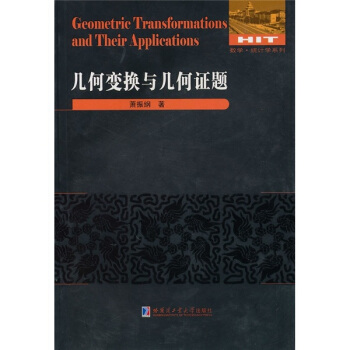
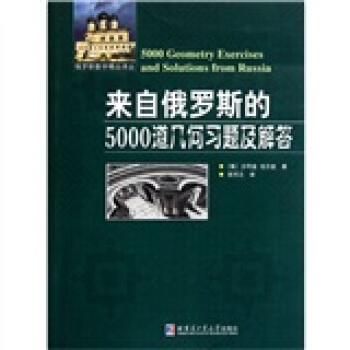


![有限群的綫性錶示 [Linear Representations of Finite Groups] pdf epub mobi 電子書 下載](https://pic.windowsfront.com/10096494/80e66ed0-32ef-4080-b176-3087bdeabdac.jpg)
![現代數學物理方法(第2捲) [Methods of Modern Mathematical Physics II] pdf epub mobi 電子書 下載](https://pic.windowsfront.com/10914333/549a7b59Nb9f42b6f.jpg)
![中外物理學精品書係·引進係列(29):等離子體光譜學導論(影印版) [Introduction to Plasma Spectroscopy] pdf epub mobi 電子書 下載](https://pic.windowsfront.com/11300130/rBEhWVIUU-wIAAAAAAKp_QZeitkAACR6ACZr94AAqoV532.jpg)
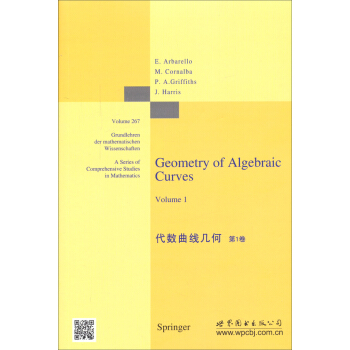
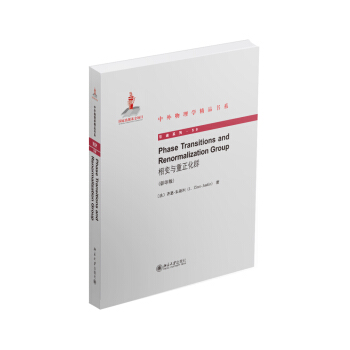


![李群論(英文版) [Theory of Lie Groups] pdf epub mobi 電子書 下載](https://pic.windowsfront.com/11142975/rBEHZVDH9-YIAAAAAAb2zyD06vgAADO5gJXIjAABvbn900.jpg)



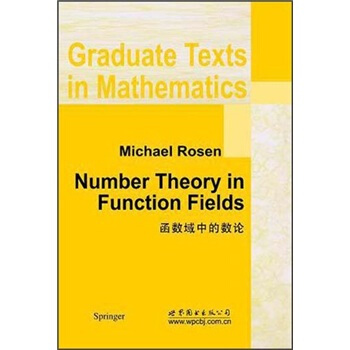

![物理學經典教材:統計力學(第2版) [Statistical Mechanics Made Simple 2nd Edition] pdf epub mobi 電子書 下載](https://pic.windowsfront.com/11004216/rBEIC0_NW0EIAAAAAACQunZ2JpEAAAYvAJ-Zb8AAJDS740.jpg)
